| Botanical Name |
|
| Family |
Fabaceae - The legume and pod-bearing family. (Pea & Bean Family) |
| Pronunciation |
in-do-GO-fer-ah het-er-oh-PHIL-uh |
| Common Name(s) |
|
| Plant Group |
- Ground Cover A plant with a low-growing, spreading habit, grown specifically to cover the ground.
- Perennial A plant whose life cycle lasts for three or more seasons.
- Veld Flower Small veld flowers of interest, rather than for their usefulness in the garden. Some of these plants have garden potential, particularly for less formal garden situations.
|
| Plant Size |
- Small to Medium
| Tree | 8m to 15m |
| Shrub | 75cm to 1m |
| Perennial/ground cover | 20cm to 40cm |
| Bulb | 30cm to 40cm |
| Succulent | 20cm to 40cm |
|
| Position |
- Partial Shade The area is in shade for part of the day and in full sun for part of the day.
- Sun The area is in full sun for all or most of the day, all year round.
|
| General Information |
- Drought Tolerance: High The plant is well adapted to arid conditions; it can survive long periods of drought and high temperatures without extra water.
- Evergreen to semi-deciduous The plant is evergreen in warmer, wetter parts of the country, but may lose some of its leaves during winter in colder, drier situations.
- Prune hard after flowering Fast growing shrubs that grow lanky within a season. Cut off branches and stems of these plants to a third of their original length. This will increase the yield of flowers, improve the plants shape and enhance the structural strength of main branches.
- Water Wise Plant species originating from low rainfall regions that require less water to survive and thrive than other plant species.
|
| Specific Information |
This is a wild plant in my garden and is still being tested as a more formal ground cover. Research has uncovered very little information about this delightful plant.
|
| Ad Break |
|
| Flowers |
| Description |
|
| Season |
- Summer to Winter Plants will seldom bloom for the entire season as given in the list, but should flower during a period within these parameters.
|
| Colour |
|
| Growth Rate |
- Fast Specifying growth rate can be very misleading as there is considerable variation of growth rate depending on type and species of plant, available water, supplementary feeding, mulching and general care, as well as the plants suitability and adaptability to the garden environment.
|
| Plant Uses |
- Attracts bees, butterflies or other insects This plant attracts insects which can be food for birds or other creatures in your garden.
- Filler Either a fast growing tree or shrub used temporarily to fill in an area while the permanent plants grow to a desired size, or a plant used to fill gaps in borders or beds.
- Ground Cover Low-lying plants that spread fast, require minimal maintenance, and cover large expanses or bare areas between bulbs or shrubs. They provide protection from erosion and drought and improve the visual appearance of the garden.
- Mass Planting Plants useful for filling a large area with just one or a few kinds of plants spaced close together. Creates a bold, dramatic effect and to reduces maintenance.
- Pioneer for new gardens A very fast growing plant, able to withstand hardship, that can be used to populate land that has recently been cleared of natural vegetation. These plants pave the way for slower-growing species by adding nutrients to the soil and creating leaf litter.
- Rock Garden An area constructed of larger rocks, arranged naturally, to emphasise the use of stones as a main element. Generally plants used do not need a lot of care.
- Wild Garden An indigenous garden planted for the benefit of wildlife and birds. Provides food, water, a variety of mini-biomes and no poisonous chemicals are used.
|
| Distribution and Habitat |
in the Northern Cape, Eastern Cape and Western Cape, in grassy fields and disturbed ground
|
| Planting Suggestions |
Plant in well-drained soil with a little compost added. Mulch and water until established. Do not over-feed or over-water as growth will become lank. Tip young growth to encourage bushing.
|
| Medicinal Uses |
|
| Ad Break |
|


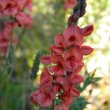
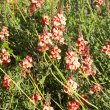
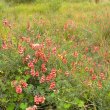
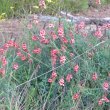
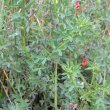
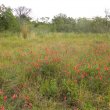


Comments
Hi Lorraine. Any idea how
Hi Lorraine. Any idea how/where I can get hold of Indigofera heterophylla - and how are they propogated?
Seeds of Indigofera heterophylla
Hi Kirsten
I have not come across any sources that stock seeds of this plant. All I can suggest is to contact seed suppliers of Indigenous plants, but as this is not really a cultivated plant, they may not stock it.
Indigenous seed suppliers:
silverhillseeds.co.za
http://www.sanbi.org/gardens/kirstenbosch/kirstenbosch-nbg-seedroom
www.seedsforafrica.co.za
Unfortunately we have had such dry weather that the plants in my wild garden did not even appear this year.
Propagation of the seeds is simple: plant to the depth of the seed in a seed box/pot, keep moist not soggy, warm but not in direct sun. Alternatively plant directly into the soil where they are to grow and keep lightly shaded until the seedlings are strong and sturdy.
I must add that after experimenting with this plant in my garden, I was disappointed with its performance as a garden plant - it did not take to pinching back and flowering was poor compared to the plants in the veld.
Sorry I can't be of more help.
Regards
Lorraine
Discuss this plant
Share knowledge, ask a question or give an experience.